Although Linz is widely known as an industrial city - the VOEST steelworks take up a considerable part of the city’s area - it also has a lot to offer in terms of history and scenery. I had an afternoon to spare in Linz as I was picking up my race number for the marathon, so I decided to go for a short walk to explore Linz.
On Linztourismus you can find plans for nine city hiking trails. I opt for the first one up the Freinberg.
The tour starts on Linz’s large, main square. Trams cross it. Crowds gather and disperse into the numerous cafés and restaurants of the city centre. In the centre of the square stands a magnificent baroque plague column. This place was once an important trading centre. The salt trail went through it, trading salt from the Salzkammergut to Bohemia.
At the northern end of the main square is the wide opening to the Nibelungen Bridge. For centuries, it was the only passable crossing over the Danube in Upper Austria. Linz was granted the bridge privilege as early as 1497, whereupon a wooden bridge was built. As a result, trade flourished in the city of Linz.
Linzer Palace#
From the plague column, the path leads up through a part of the old town to Linz Palace. Today, the Renaissance palace houses the Schlossmuseum Linz. As a universal museum, it covers the natural, cultural and artistic history of Upper Austria. In the past, it served as the seat of the governor of Upper Austria.
The palace towers impressively above the Danube and offers a marvellous view over Linz. The Romans are said to have used the excellent location as a watchtower. Excavations indicate this. A defence system was first documented in 799. The palace received its present form around 1600.
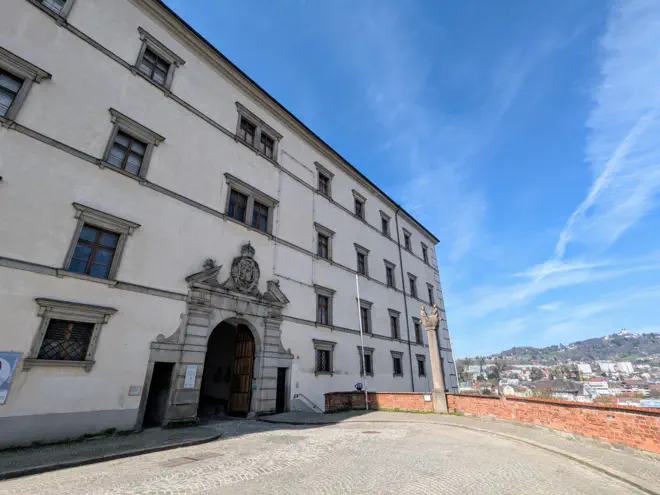 />
/>
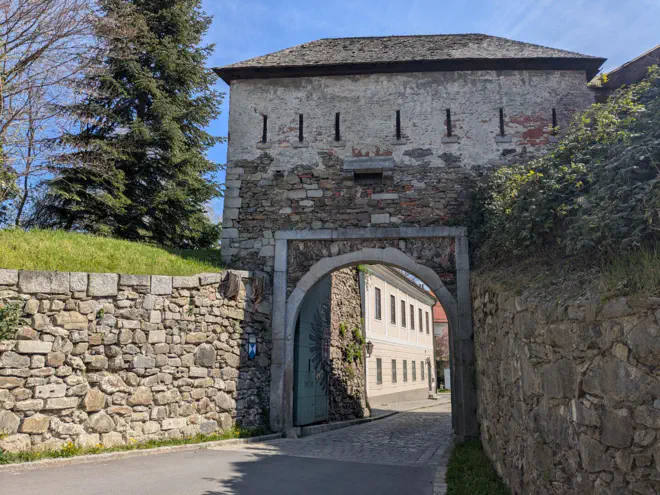 />
/>Through the castle and then two fortress gates, Friedrich’s Gate and Martin’s Gate, the route continues uphill to the Freinberg. The town houses up here are only single-storey. No comparison to the multi-storey buildings in the old town below the castle. Nevertheless, this is the oldest part of Linz. The early medieval settlement was located around the inconspicuous St. Martin’s Church on this hill.
Freinberg#
The closed rows of houses dissolve and allow deep views into the Danube valley. I reach the end of the built-up area and switch from tarmac to gravel into the forest. The forest on the Freinberg was protected from further development in the 19th century by the Linzer Verschönerungs-Verein and preserved as a nature park for the purpose of recreation for the city’s population. The population of the city of Linz exploded at this time. Rapid industrialisation attracted more and more people to the city. Without the efforts of this organisation, the forest wouldn’t exist no more.
The association also had a lookout tower built. It looks familiar to me: After all, it is very similar to the tower on the Sternstein near Bad Leonfelden. Both exude that romantic aura of Sleeping Beauty’s tower. But this tower was built ten years earlier, in 1888, to mark the fortieth anniversary of Emperor Franz Josef I’s accession to the throne.
The interior of the Franz-Josefs-Warte is dominated by the damp smell of wood. The old wooden spiral staircase creaks, but it still fulfils its purpose. I make it to the top of the tower unscathed. However, Sleeping Beauty is sadly not waiting for me, but instead a fantastic view over the Danube valley, Linz and the Pöstlingberg on the opposite side of the Danube is.
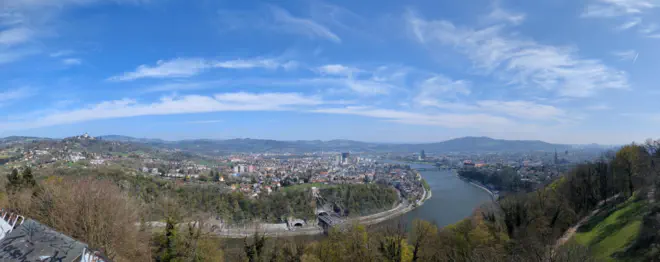
Back down on solid forest ground, I walk downhill for the first time, initially past a broad earth wall that was built in the late Bronze Age. The settlement history of Linz goes back a long way. Then I reach the outskirts of the city again. There are several large, modern villas on the hillside. The views, tranquillity and seclusion of the location are popular with richer folks.
Linzer Stupa#
Linz is becoming more and more rural. Large square farmhouses nestle on the slopes. Surrounding them is a sea of green meadows with blooming cherry and apple trees. I believe I’m in the countryside. The city seems far away and is nowhere to be seen.
The next sight is a little surprise that you wouldn’t expect in Austria. It is a Buddhist building - a stupa.
A stupa (tib. Chörten) is an ancient archetypal symbol for the fully realised or “awakened” mind.
The wind blows strongly and makes the prayer flags wave violently. A golden Buddha sits in the stupa and gazes out over the vast Alpine foothills in deep meditation. This enlightenment stupa was only built in Linz in 2013.
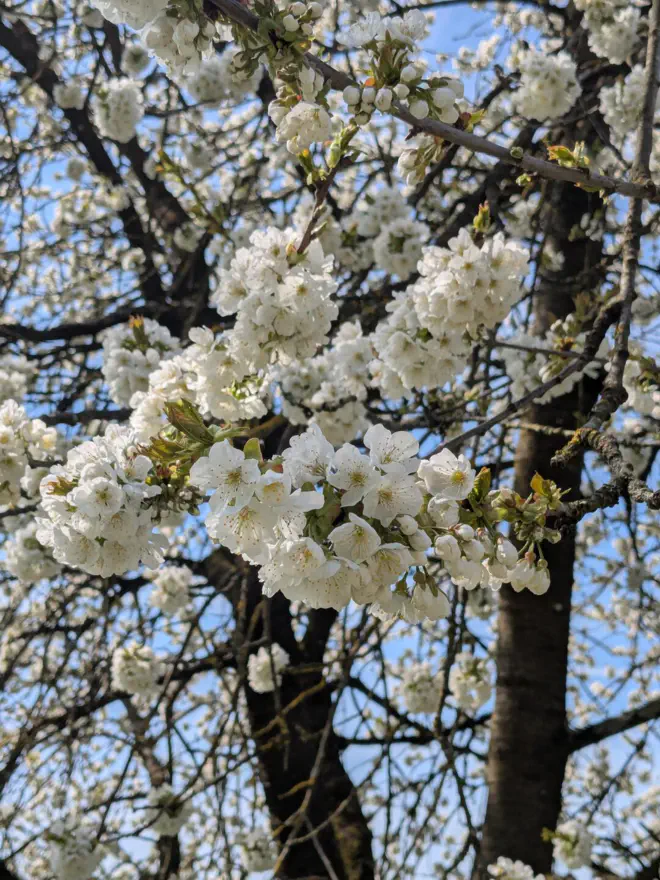 />
/>
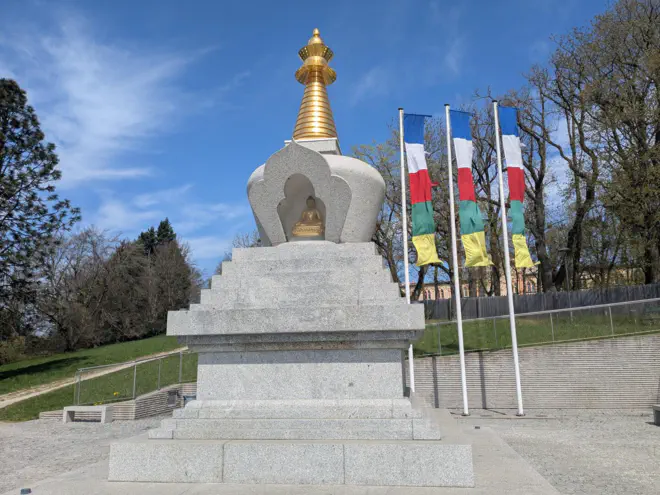 />
/>Old Town#
Finally, I return to the city centre and the main square. Before that, I pass the Landhaus, which was built by the Upper Austrian estates as an office and parliament. It is still the seat of the provincial governor today, but most of the administration has moved to the modern office towers near the main railway station.
After passing through the Landhaus, I find myself back in the historic city centre and immediately at the main square, my starting point. An exciting hike that reveals lesser-known facets of Linz.
